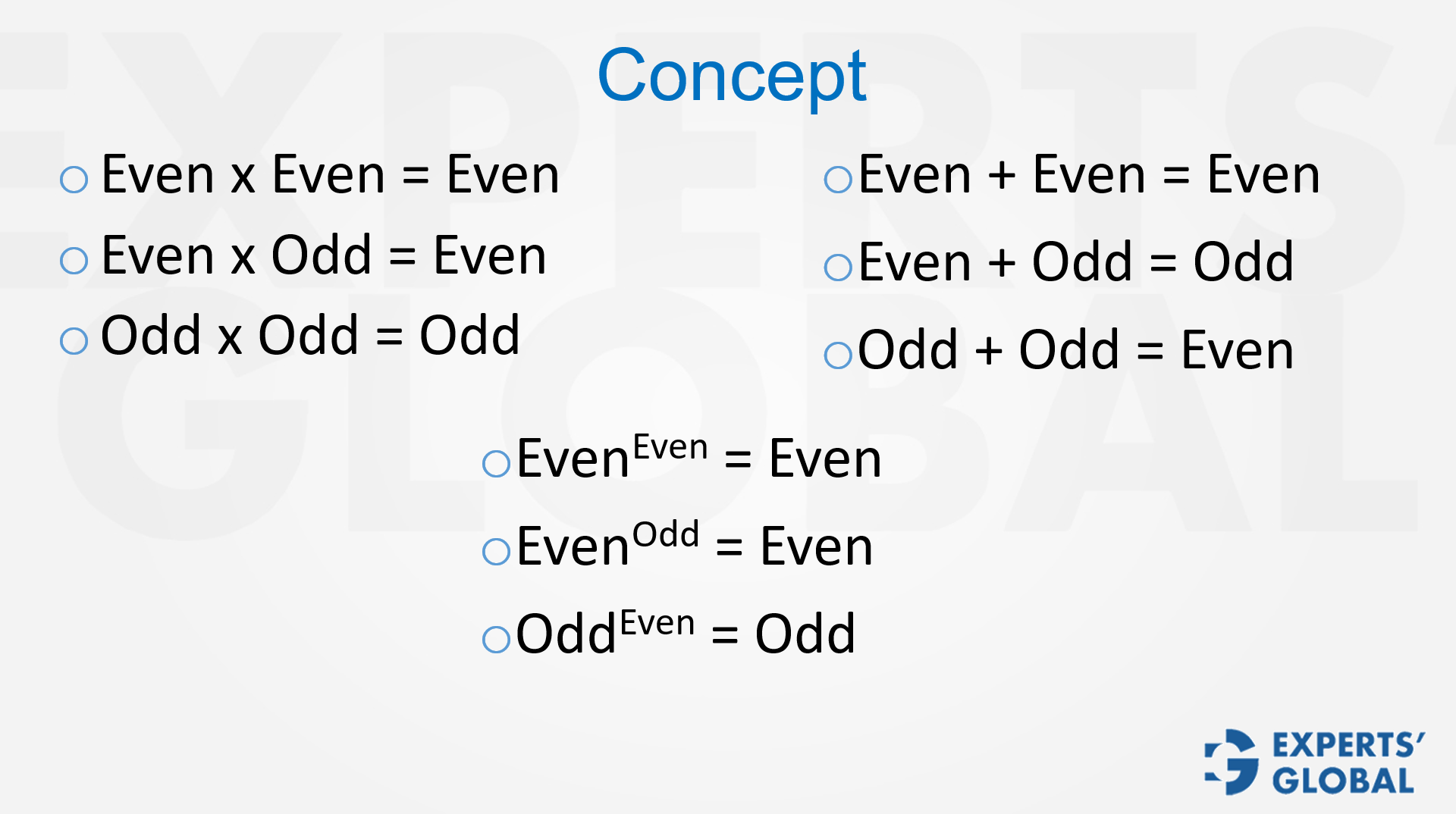Invest 30 seconds...
...for what may lead to a life altering association!
Help Line
- +91.8800.2828.00 (IND)
- 1030-1830 Hrs IST, Mon-Sat
- support@expertsglobal.com
...for what may lead to a life altering association!


Even numbers are multiples of 2; odd numbers are not. Learn how adding, subtracting, and multiplying changes even and odd results. Watch for constraints and edge cases that flip answers. Pay special attention to zero and one, as these often create traps on GMAT questions.
On the GMAT, the simplest concepts often hold the deepest traps. Take the rules of even and odd numbers. They look elementary, almost too easy to worry about, but when tested skilfully on GMAT questions, they reveal layers that many test takers overlook. A “must be” question, for example, challenges you to prove that something is always true; the key is not to collect yes cases but to hunt for a single no; if you can find even one counterexample, the expression does not always hold. That shift in perspective is crucial for mastering the test. Building such habits and concepts requires a steady mix of structured learning from a thorough GMAT prep course and rigorous practice through a comprehensive GMAT test series. The goal is not just to know formulas or rules but to sharpen the ability to question, test, and explore possibilities with absolute clarity.


Even and odd numbers seem like the most basic rules of arithmetic.
Even × even is even,
even × odd is even,
odd × odd is odd.
Similar rules apply for addition and exponentiation. On the surface, these facts feel obvious, but the GMAT takes these building blocks and creates subtle traps that separate quick thinkers from true problem solvers.
Q. If p, q, and r are positive integers, and pqr/8 is an integer, which of the following must be even?
(Note: pqr means p x q x r, pq means p x q etc)
Consider the problem: here p, q, and r are positive integers, and (p × q × r)/8 is an integer. The question asks which expressions must be even. The phrase “must be” is critical. It means the expression has to be even in every possible case, without exception.
The correct way to approach such questions is not to confirm “yes” answers but to actively search for a “no.” The moment you find even one case where the expression is not even, the choice fails.
Each expression is tested by plugging in different values of p, q, and r.
In all seven attempts, no expression was guaranteed to be even. That is the essence of a “must be” question: by testing boundaries, you uncover the single counterexample that proves the expression is not always valid.
This exercise is not about memorizing rules. It is about training your mind to remain open to every possibility. The GMAT rewards those who resist easy assumptions and instead push deeper, questioning every step. By practicing this habit, you not only solve questions more accurately but also cultivate the patience and precision that strengthen your performance across the test. These qualities ultimately carry into the MBA admissions process, where the ability to test assumptions and see beyond the surface reflects true analytical strength.
The lesson of even and odd numbers on the GMAT is not about arithmetic but about mindset. What looks simple may hide subtle traps, and certainty comes only by testing boundaries. A single counterexample can overturn what feels obvious. This habit of questioning assumptions and searching for clarity is what turns preparation into mastery. Beyond the GMAT, it is the same discipline that shapes thoughtful leaders who think deeply, test carefully, and act with conviction.
How about a little workout? Take a free, full-length GMAT mock!